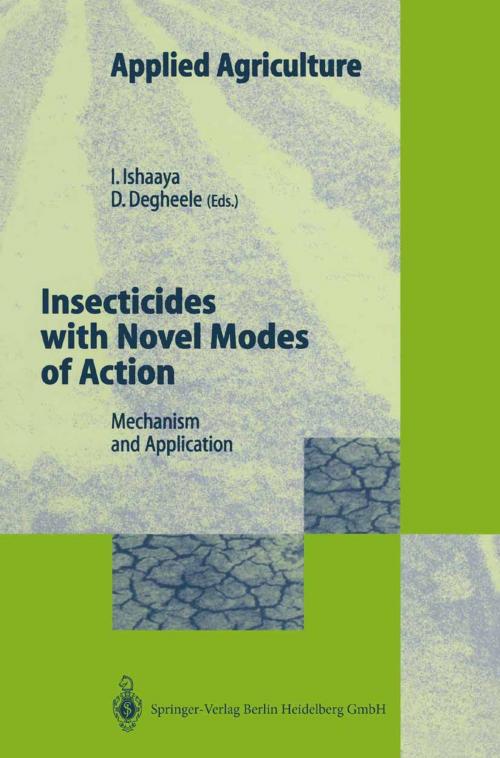Insecticides with Novel Modes of Action
Mechanisms and Application
Nonfiction, Science & Nature, Technology, Agriculture & Animal Husbandry| Author: | ISBN: | 9783662035658 | |
| Publisher: | Springer Berlin Heidelberg | Publication: | June 29, 2013 |
| Imprint: | Springer | Language: | English |
| Author: | |
| ISBN: | 9783662035658 |
| Publisher: | Springer Berlin Heidelberg |
| Publication: | June 29, 2013 |
| Imprint: | Springer |
| Language: | English |
The future of insect control looked very bright in the 1950s and 1960s with new insecticides constantly coming onto the market. Today, however, whole classes of pesticide chemistry have fallen by the wayside due to misuse which generated resistance problems reaching crisis proportions, severe adverse effects on the environment, and public outcry that has led to increasingly stricter regulation and legislation. It is with this background, demanding the need for safer, environmentally friendly pesticides and new strategies to reduce resistance problems, that this book was written. The authors of the various chapters have a wealth of experience in pesticide chemistry, biochemical modes of action, mechanism of resistance and application, and have presented concise reviews. Each is actively involved in thedevelopment of new groups of pesticide chemistry which led to the development of novel insecticides with special impact in controlling agricultural pests. Emphasis has been given to insecticides with selective properties, such as insect growth regulators hormone mimics, ecdysone agonists), (chitin synthesis inhibitors, juvenile chloronicotinyl insecticides (imidacloprid, acetamiprid), botanical insecticides (neem, plant oils), pymetrozine, diafenthiuron, pyrrole insecticides, and others. The importance of these compounds, as components in integrated pest management programs and in insecticide resistance management strategies, is discussed. The data presented are essential in establishing new technologies and developing novel groups of compounds which will have impact on our future agricultural practices.
The future of insect control looked very bright in the 1950s and 1960s with new insecticides constantly coming onto the market. Today, however, whole classes of pesticide chemistry have fallen by the wayside due to misuse which generated resistance problems reaching crisis proportions, severe adverse effects on the environment, and public outcry that has led to increasingly stricter regulation and legislation. It is with this background, demanding the need for safer, environmentally friendly pesticides and new strategies to reduce resistance problems, that this book was written. The authors of the various chapters have a wealth of experience in pesticide chemistry, biochemical modes of action, mechanism of resistance and application, and have presented concise reviews. Each is actively involved in thedevelopment of new groups of pesticide chemistry which led to the development of novel insecticides with special impact in controlling agricultural pests. Emphasis has been given to insecticides with selective properties, such as insect growth regulators hormone mimics, ecdysone agonists), (chitin synthesis inhibitors, juvenile chloronicotinyl insecticides (imidacloprid, acetamiprid), botanical insecticides (neem, plant oils), pymetrozine, diafenthiuron, pyrrole insecticides, and others. The importance of these compounds, as components in integrated pest management programs and in insecticide resistance management strategies, is discussed. The data presented are essential in establishing new technologies and developing novel groups of compounds which will have impact on our future agricultural practices.















